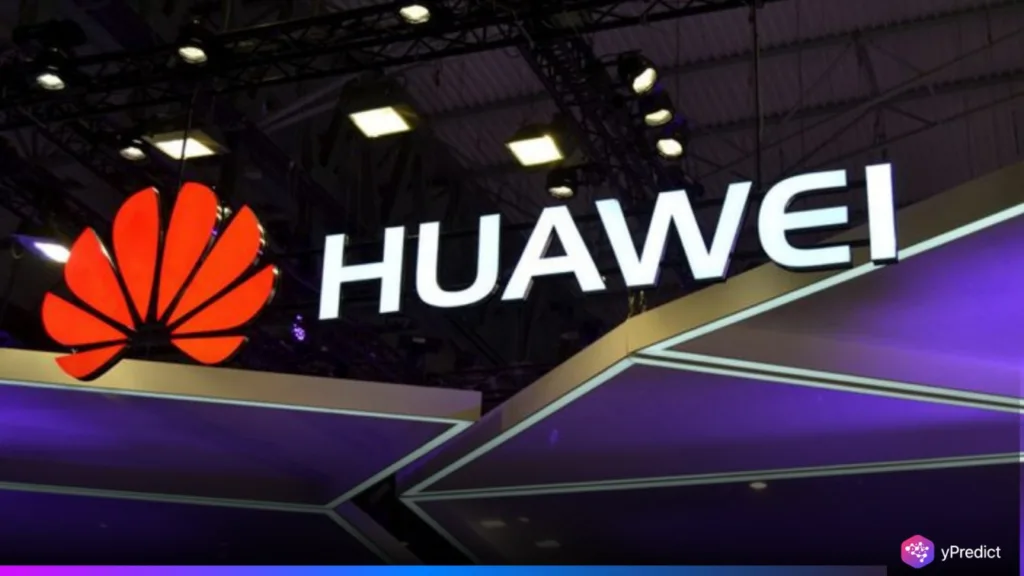
Huawei officially launched its CloudMatrix 384 AI system at the World Artificial Intelligence Conference in Shanghai on July 26, 2025, marking a high-stakes move against Nvidia’s grip on AI hardware. Built with 384 Ascend 910C chips, CloudMatrix 384 aims to match or surpass Nvidia’s GB200 NVL72 system on several fronts. This debut underscores Huawei AI’s growing role in the global chip conversation—despite strict U.S. sanctions that have forced the company to pivot aggressively toward self-reliant innovation.
The supercomputing system targets large-scale AI training with a design that capitalizes on high-speed interconnectivity and efficient multi-chip coordination. The timing, ambition, and technical strategy behind CloudMatrix 384 point directly to Huawei’s goal of becoming a serious Nvidia rival within China’s AI race.
Supernode Architecture Redefines Performance Strategy
Huawei’s CloudMatrix 384 system relies on a “supernode” architecture that links Ascend 910C chips in a tightly connected high-bandwidth network. This system-level design offsets the chips’ limitations and increases total throughput. The approach shifts focus away from raw chip power and toward architectural synergy, enabling the system to outperform Nvidia’s GB200 NVL72 in certain large-scale training scenarios. Independent firm SemiAnalysis confirmed that this design allows Huawei AI to mask chip deficits through parallel processing and intelligent workload distribution. In a restricted tech environment, this design proves not only innovative but also necessary. The supernode strategy shows how Huawei uses its tech surge as a defensive response to blocked U.S. chip access.
Nvidia Responds to Huawei’s Growing Threat
Nvidia CEO Jensen Huang responded publicly to Huawei’s CloudMatrix 384 announcement, acknowledging the speed and depth of its AI hardware progress. This rare validation signals a changing tone at the top of the industry. Huang’s remarks suggest Nvidia no longer sees Huawei AI as a minor competitor restricted by sanctions, but as a rising rival inside the Chinese market. While Nvidia still leads globally thanks to its expansive developer ecosystem and mature software stack, the balance within China is shifting. U.S. export restrictions have created an environment where Huawei’s innovations face no foreign competition, accelerating its dominance at home. With direct support from the Chinese government, Huawei’s AI strategy is no longer reactionary—it’s assertive.
Ecosystem Gaps and Missing Benchmarks Hold Huawei Back
Huawei claims its Ascend 910D chip can compete directly with Nvidia’s H100, especially in training large language models. However, industry skepticism persists due to the lack of third-party benchmarks. Global developers also face friction integrating Huawei AI hardware due to its limited software environment. Nvidia, by contrast, offers seamless tools, frameworks, and developer resources that have become the industry standard. Without comparable infrastructure, Huawei’s impact remains largely domestic. Its CloudMatrix 384 rollout may impress in raw specs, but the absence of transparent validation continues to stall international traction. Despite strong local momentum, Huawei must close its ecosystem gaps to position itself as more than a regional force in AI computing.
China’s Tech Surge Propels Huawei’s Momentum
Huawei’s hardware leap comes amid a national tech surge driven by policy support and market necessity. U.S. sanctions have inadvertently galvanized China’s domestic chip ambitions, with Huawei AI positioned at the forefront. CloudMatrix 384 is more than a product—it’s a statement of resilience. The Chinese government continues to back local champions with subsidies, R&D incentives, and exclusive infrastructure contracts. Consequently, Huawei’s AI ecosystems are quickly becoming foundational to China’s AI cloud and enterprise environments.
This surge is happening in data centers as well as other markets, forming a self-sustaining ecosystem in which Huawei is evolving, moving, and creating fairly rapidly. While it remains difficult globally for Huawei to get in, Huawei AI is now defining the strategic plan for China’s AI infrastructure roadmap. Huawei’s launch of the CloudMatrix 384 AI system signals a turning point in China’s AI race. By leaning into architectural innovation and local policy support, Huawei AI has created a system that directly challenges Nvidia’s dominance, at least within Chinese borders. Its supernode architecture, combined with aggressive state backing, allows it to grow without external dependencies.






